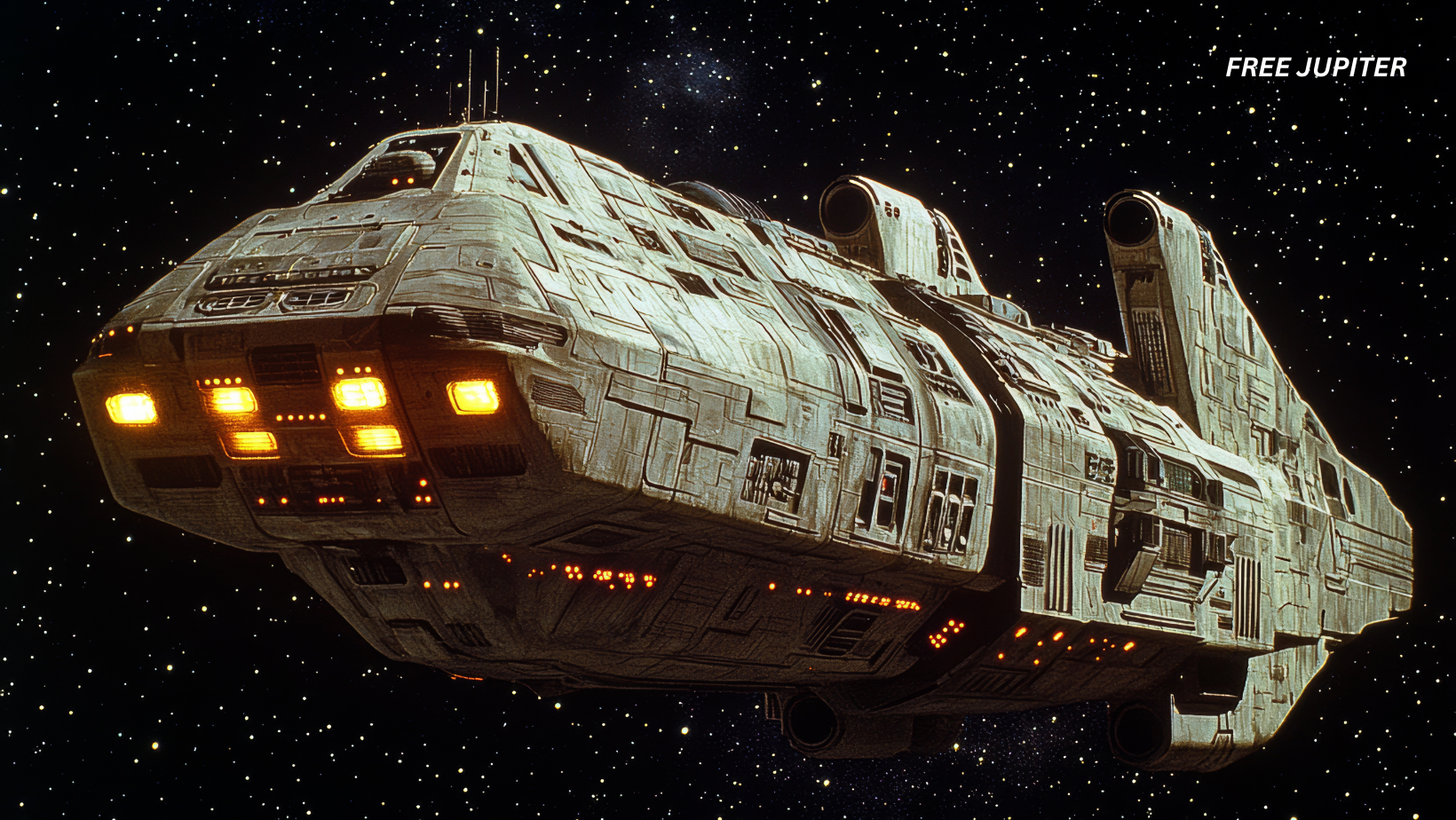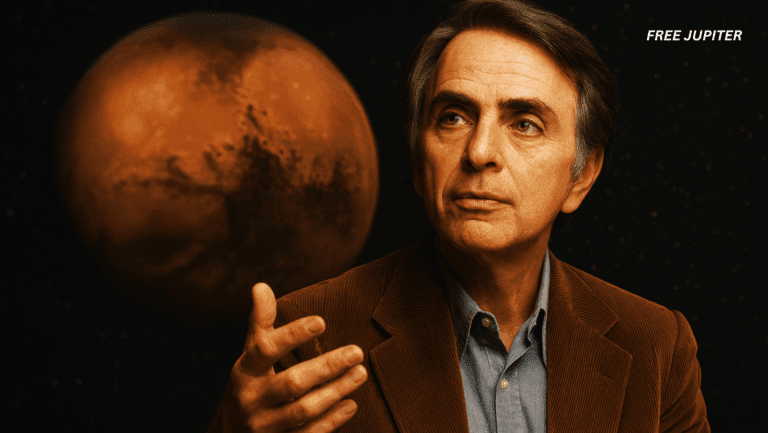Friendly Note: FreeJupiter.com shares general info for curious minds 🌟 Please fact-check all claims—and always check health matters with a professional 💙
The universe occasionally sends us surprises, and one such guest has just made its way into our cosmic neighborhood. Spotted in July by a telescope system in Chile, an unusual object called 3I/ATLAS has captured the attention of astronomers—and sparked some bold speculation. Harvard astrophysicist Dr. Avi Loeb has suggested that this object may not be a regular comet at all. Instead, he dares to ask: could it be a nuclear-powered spacecraft from beyond our solar system?
It’s a theory that sounds like science fiction. But behind the sensational headline lies a mix of careful observation, puzzling anomalies, and an open-minded willingness to consider possibilities that most scientists hesitate to discuss.
A Rare Visitor From the Depths of Space
To understand why 3I/ATLAS is so intriguing, it helps to know just how rare interstellar objects are. Almost everything that orbits the Sun—planets, moons, asteroids, comets—originated in our solar system. Interstellar objects, on the other hand, are formed in other star systems and later flung into space, wandering aimlessly until gravity pulls them near another star.
So far, astronomers have only confirmed three such interstellar visitors:
- ʻOumuamua (2017) – The first interstellar object ever detected. It was long, thin, and cigar-shaped, moving in ways scientists struggled to explain.
- Borisov (2019) – A more typical comet, showing a tail of gas and dust.
- 3I/ATLAS (2024) – The newest arrival, and the one now under debate.
The fact that 3I/ATLAS is only the third of its kind makes it immediately noteworthy. These objects are like cosmic postcards, carrying secrets from distant systems and possibly even offering a glimpse into how other planets form.
Read more: Almost the Entire Universe Is Invisible to Us
Why NASA Calls It a Comet—And Why Loeb Disagrees
NASA has labeled 3I/ATLAS as a comet. This is the safe and expected choice. Comets are icy bodies that glow when they approach a star. The Sun’s heat vaporizes their icy surfaces, creating a tail of gas and dust that streams behind them.
But here’s the twist: 3I/ATLAS isn’t behaving like a comet should. Dr. Loeb noticed that its glow appeared in front of it instead of trailing behind. That detail might sound minor, but it’s actually a big red flag. If sunlight alone is responsible for the brightness, the glowing material should always trail backward—like hair streaming behind someone running against the wind. Instead, 3I/ATLAS seems to shine from its leading edge.
This has led Loeb to argue that the light is not simply reflected sunlight or ordinary comet gas. Something else, he believes, may be powering it.
The Nuclear Spaceship Hypothesis
In his writings, Loeb proposed that 3I/ATLAS could be generating its own energy, possibly through nuclear power. He even suggested that the dust seen around it might be debris picked up during its long interstellar journey.
Why nuclear power? Because the brightness level observed from 3I/ATLAS is equivalent to a gigawatt-scale output—comparable to the energy produced by large nuclear reactors here on Earth. Other explanations fall flat:
- Primordial black holes – Too faint, producing only a whisper of power.
- Radioactive fragments from a supernova – Incredibly rare, and unlikely to line up with the observed data.
- Friction from interstellar dust and gas – Doesn’t match the object’s momentum or density.
That leaves the nuclear option as the simplest explanation, at least if the object isn’t natural.
Size, Shape, and Trajectory Raise More Questions
At around 20 kilometers across, 3I/ATLAS is no tiny speck. That makes it larger than Manhattan and far bigger than the first interstellar visitor, ʻOumuamua, which measured only a few hundred meters.
Its path through the solar system also seems peculiar. Loeb has pointed out that if interstellar objects arrived at random, only about 1 in 500 would align so neatly with planetary orbits. But 3I/ATLAS isn’t just aligned—it also passes unusually close to Mars, Venus, and Jupiter. The odds of this happening by chance, according to Loeb, are about 1 in 20,000.
NASA has predicted that the object will reach its closest approach to the Sun on October 30, skimming by at about 130 million miles—roughly the same distance Earth sometimes sits from our star.
Read more: Scientists Think a ‘Dark Mirror’ Universe Could Be Right Beside Ours
Loeb’s History With Cosmic Mysteries
This isn’t the first time Dr. Avi Loeb has made headlines for daring ideas. He previously argued that ʻOumuamua, the first interstellar object detected in 2017, might have been a piece of alien technology—perhaps a solar sail or probe. While most astronomers rejected that claim, his book Extraterrestrial sparked lively debate in the scientific community and beyond.
Loeb is known for pushing boundaries. Some see him as a visionary willing to challenge scientific orthodoxy; others think his ideas lean too far into speculation. Regardless of opinion, his arguments often highlight anomalies that mainstream explanations overlook.
How Nuclear Power Works in Space
To put Loeb’s theory in perspective, it helps to understand nuclear power in space travel. On Earth, nuclear reactors split atoms to generate huge amounts of energy. The same principle can be applied to spacecraft, offering much more power than solar panels or chemical rockets.
In fact, both the United States and Russia have experimented with nuclear propulsion concepts for decades. NASA has recently revived interest in nuclear-powered spacecraft, particularly for missions to Mars, because they could dramatically shorten travel time.
If an alien civilization were exploring the galaxy, nuclear power would be a logical choice for their ships. It provides high energy, endurance, and the ability to operate far from stars where sunlight is weak.
What If It Really Is a Spacecraft?
The idea that 3I/ATLAS might be artificial is admittedly extraordinary. But if true, it would change everything. Here are a few implications:
- Proof of extraterrestrial intelligence – Humanity would finally know we are not alone.
- New technology models – Studying such an object could provide insights into advanced propulsion systems.
- Philosophical shockwaves – Religions, cultures, and societies worldwide would face profound questions about humanity’s place in the universe.
- Global cooperation—or conflict – Nations might either unite to study it or compete for control over any discoveries.
Loeb himself has said: “If it turns out to be technological, it would obviously have a big impact on the future of humanity.”
Related Interstellar Mysteries
3I/ATLAS isn’t the first cosmic puzzle to stir debate. Other phenomena have also left scientists wondering if something more is at play:
- ʻOumuamua’s strange acceleration – It sped up as if pushed by something other than gravity.
- The Wow! Signal (1977) – A strong radio burst detected by a telescope in Ohio, never explained.
- Fast Radio Bursts (FRBs) – Powerful, repeating flashes of radio energy from distant galaxies, some speculate may be artificial.
Each case reminds us that the universe still holds secrets that resist easy answers.
A Balance of Skepticism and Wonder
Of course, most scientists urge caution. History shows that extraordinary claims often collapse under closer inspection. It’s entirely possible that 3I/ATLAS is simply a comet with unusual behavior, and that the anomalies have natural explanations we just don’t yet understand.
Still, Loeb argues that we must remain open-minded. Dismissing the possibility of technology outright, he warns, could blind us to groundbreaking discoveries.
Read more: Consciousness Is Not Confined to the Brain, But Is Connected To The Whole Universe, Scientists Say
The Big Picture
Whether 3I/ATLAS is an exotic comet, a fragment of something stranger, or even a probe from another civilization, one thing is clear: it reminds us that space is far from empty. Each new discovery invites us to question what we know and to imagine what might lie beyond.
As 3I/ATLAS continues its journey past the Sun and through our solar system, astronomers will watch closely, hoping for clues that reveal its true nature. For now, the possibility—however slim—that it is more than just rock and ice keeps imaginations buzzing.
After all, the line between science fiction and science fact has blurred more than once in history.










